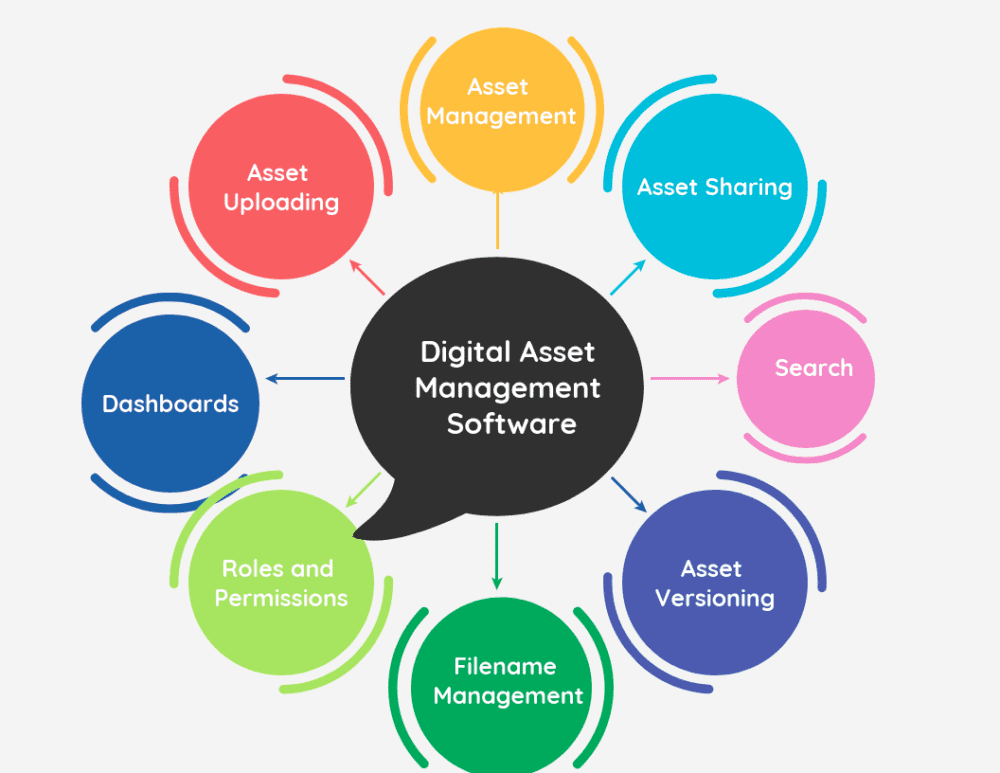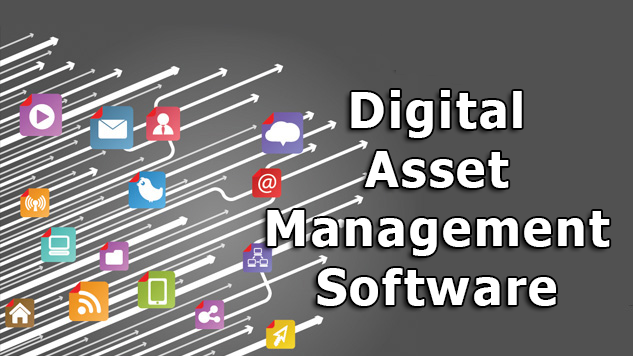
Upgrade & Secure Your Future with DevOps, SRE, DevSecOps, MLOps!
We spend hours scrolling social media and waste money on things we forget, but won’t spend 30 minutes a day earning certifications that can change our lives.
Master in DevOps, SRE, DevSecOps & MLOps by DevOps School!
Learn from Guru Rajesh Kumar and double your salary in just one year.

Digital Asset Management (DAM) software is a technology solution used to store, organize, manage, and distribute digital assets efficiently. Digital assets can include a wide range of media files, such as images, videos, audio files, documents, and other creative content. DAM software is particularly valuable for organizations and individuals who have a large volume of digital assets that need to be organized and easily accessible.
WizBrand is a great DAM software for businesses of all sizes. It offers a wide range of features at an affordable price, including centralized storage, asset organization, asset security, and asset sharing. WizBrand is also easy to use and navigate, making it a great choice for businesses that are new to DAM.
Features:
- Asset Organization: DAM software allows businesses to categorize and tag their assets, making it easy to search and locate specific files. It provides a centralized repository for all digital assets, eliminating the need for multiple storage systems.
- Metadata Management: DAM software enables businesses to attach metadata to their assets, providing valuable information such as file type, size, creation date, copyright information, and more. This metadata helps in efficient asset retrieval and tracking.
- Version Control: With DAM software, businesses can maintain different versions of their assets, ensuring that the most up-to-date version is always accessible. It also tracks changes made to assets, providing a clear audit trail.
- Collaboration and Workflow: DAM software facilitates seamless collaboration among team members by allowing them to access, review, and edit assets from a centralized platform. It streamlines the creative workflow and ensures everyone is working on the latest version of assets.
- Rights Management: DAM software helps businesses manage usage rights and permissions for their assets. It ensures compliance with copyright laws and prevents unauthorized access or usage of assets.
- Integration and Scalability: DAM software integrates with other tools and systems such as content management systems (CMS), customer relationship management (CRM) software, and more. It scales with the growing needs of businesses, accommodating a large volume of assets.
Benefits:
- Improved Efficiency: DAM software eliminates manual searching and sorting of assets, saving time and effort. It provides quick and easy access to assets, enabling users to find what they need in seconds.
- Enhanced Brand Consistency: DAM software helps businesses maintain brand consistency by providing a centralized platform for storing and accessing brand assets such as logos, templates, and guidelines. It ensures that everyone in the organization uses the correct and up-to-date assets.
- Streamlined Collaboration: DAM software facilitates collaboration among team members, both within and outside the organization. It enables seamless sharing of assets, feedback, and approvals, improving overall productivity and reducing errors.
- Cost Savings: By optimizing asset management processes, DAM software reduces the risk of duplicate or lost assets. It eliminates the need for additional storage solutions and minimizes the time spent on asset retrieval and management.
- Enhanced Security: DAM software provides robust security features, including access controls, encryption, and backups. It ensures that sensitive and confidential assets are protected from unauthorized access or accidental loss.
Functions of DAM Software

Digital Asset Management (DAM) software provides a range of functions and features designed to help organizations efficiently manage their digital assets, such as images, videos, documents, and other media files.
Here are the key functions of DAM software:
- Asset Storage and Organization: DAM software serves as a centralized repository for storing digital assets. It allows users to organize assets through categories, folders, tags, and metadata, making it easier to find and manage files.
- Metadata Management: DAM software enables the creation, editing, and management of metadata associated with digital assets. Metadata provides valuable information about each asset, such as title, description, keywords, creation date, copyright information, and usage rights.
- Search and Retrieval: Users can efficiently search and retrieve assets using various search criteria, including keywords, metadata, tags, and custom filters. This makes it easy to find specific files in a large digital asset library.
- Version Control: DAM software often includes version control features, allowing users to track different versions of assets and manage changes. This is crucial for maintaining a history of edits and ensuring the use of the most up-to-date assets.
- Access Control and Permissions: DAM software provides access control settings, allowing administrators to define user permissions and restrictions. This ensures that only authorized individuals can access, edit, or download specific assets, enhancing security.
- Collaboration and Workflow: DAM software supports collaboration through features like comments, annotations, and approval workflows. Team members can leave feedback and collaborate on projects, improving communication and content creation processes.
- Content Distribution: DAM software facilitates the distribution of assets to various channels and platforms. Users can generate shareable links or embed assets in websites and documents, ensuring content is easily accessible to internal and external stakeholders.
- Analytics and Reporting: Some DAM software solutions offer analytics and reporting capabilities, allowing users to track asset usage, performance, and engagement. This data helps organizations make data-driven decisions about their content strategy.
- File Conversion and Transformation: Certain DAM software includes tools for converting and transforming files into different formats, making it easier to adapt assets for various devices and platforms.
- Integration: DAM software often integrates with other software applications, such as content management systems (CMS), marketing tools, graphic design software, and e-commerce platforms, streamlining workflows and enhancing productivity.
Feature of Digital Asset Management Websites
What is Digital Asset Management?
Digital Asset Management refers to the process of managing and organizing digital assets, such as images, videos, audio files, documents, and more. It involves storing these assets in a centralized repository, making them easily accessible to authorized users. DAM systems provide metadata and tagging capabilities, enabling users to search and locate specific assets quickly.
The Benefits of Digital Asset Management
Implementing a DAM system offers several benefits for businesses:
- Streamlined Workflow: With a DAM system in place, teams can collaborate more effectively, share assets, and streamline their workflow. This eliminates the need for manual file sharing and reduces the chances of version control issues.
- Improved Brand Consistency: A DAM system ensures that all digital assets adhere to brand guidelines. This helps maintain a consistent brand image across all marketing channels.
- Time and Cost Savings: Searching for specific assets can be time-consuming and costly. A DAM system allows users to find assets quickly, reducing the time spent on manual searching and minimizing the risk of purchasing duplicate assets.
- Enhanced Security: A robust DAM system provides secure access controls, ensuring that only authorized users can view and download assets. This prevents unauthorized distribution and protects sensitive company information.
How to Choose a Digital Asset Management System
When selecting a DAM system, consider the following factors:
- Scalability: Ensure that the DAM system can handle your organization’s current and future needs. It should be able to accommodate a growing number of assets and users.
- User-Friendly Interface: The DAM system should have an intuitive interface that is easy to navigate. This will encourage user adoption and minimize the learning curve.
- Integration Capabilities: Check if the DAM system can integrate with other software and platforms that your organization uses. This will facilitate seamless workflows and data synchronization.
- Metadata and Tagging Features: Look for a DAM system that offers robust metadata and tagging capabilities. This will make asset search and retrieval more efficient.
- Security Measures: Evaluate the security features of the DAM system, such as access controls, permissions, and encryption. Ensure that it meets your organization’s data security requirements.
List Top Digital Asset Management Websites

These websites offer a variety of DAM features, such as centralized storage, asset organization, asset security, and asset sharing. They are used by organizations of all sizes, across all industries.
Here is a brief overview of each website:
- WizBrand: WizBrand is a great DAM software for businesses of all sizes. It offers a wide range of features at an affordable price, including centralized storage, asset organization, asset security, and asset sharing. WizBrand is also easy to use and navigate, making it a great choice for businesses that are new to DAM.
- Bynder: Bynder is a cloud-based DAM platform that helps organizations to manage their digital assets, such as images, videos, and documents. It offers a variety of features, including centralized storage, asset organization, asset security, and asset sharing. Bynder is used by organizations of all sizes, across all industries.
- Canto: Canto is another cloud-based DAM platform that helps organizations to manage their digital assets. It offers a variety of features, including centralized storage, asset organization, asset security, and asset sharing. Canto is used by organizations of all sizes, across all industries.
- Brandfolder: Brandfolder is a cloud-based DAM platform that helps organizations to manage their brand assets. It offers a variety of features, including centralized storage, asset organization, asset security, and asset sharing. Brandfolder is used by organizations of all sizes, across all industries.
- MediaValet: MediaValet is a cloud-based DAM platform that helps organizations to manage their digital assets, with a focus on video. It offers a variety of features, including centralized storage, asset organization, asset security, and asset sharing. MediaValet is used by organizations of all sizes, across all industries.
- Widen Collective: Widen Collective is a cloud-based DAM platform that helps organizations to manage their digital assets, with a focus on marketing and sales. It offers a variety of features, including centralized storage, asset organization, asset security, and asset sharing. Widen Collective is used by organizations of all sizes, across all industries.
- Adobe Experience Manager: Adobe Experience Manager is a cloud-based DAM platform that helps organizations to manage their digital assets, with a focus on customer experience. It offers a variety of features, including centralized storage, asset organization, asset security, and asset sharing. Adobe Experience Manager is used by organizations of all sizes, across all industries.
- Cloudinary: Cloudinary is a cloud-based DAM platform that helps organizations to manage their digital assets, with a focus on performance and scalability. It offers a variety of features, including centralized storage, asset organization, asset security, and asset sharing. Cloudinary is used by organizations of all sizes, across all industries.
- Nuxeo: Nuxeo is a cloud-based DAM platform that helps organizations to manage their digital assets, with a focus on content management. It offers a variety of features, including centralized storage, asset organization, asset security, and asset sharing. Nuxeo is used by organizations of all sizes, across all industries.
- Brightspot: Brightspot is a cloud-based DAM platform that helps organizations to manage their digital assets, with a focus on media and publishing. It offers a variety of features, including centralized storage, asset organization, asset security, and asset sharing. Brightspot is used by organizations of all sizes, across all industries.
- Amplifi.io: Amplifi.io is a cloud-based DAM platform that helps organizations to manage their digital assets, with a focus on marketing and sales. It offers a variety of features, including centralized storage, asset organization, asset security, and asset sharing. Amplifi.io is used by organizations of all sizes, across all industries.
- Filecamp: Filecamp is a cloud-based DAM platform that helps organizations to manage their digital assets, with a focus on customization. It offers a variety of features, including centralized storage, asset organization, asset security, and asset sharing. Filecamp is used by organizations of all sizes, across all industries.
- Scaleflex: Scaleflex is a cloud-based DAM platform that helps organizations to manage their digital assets, with a focus on MACH architecture. It offers a variety of features, including centralized storage, asset organization, asset security, and asset sharing. Scaleflex is used by organizations of all sizes, across all industries.